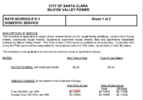I charged my new Model 3 using a 110v outlet for 15 hours last night from midnight to 3pm (which qualified for the lowest rate of $0.27/kwh) and got 80 miles or 18 kwh in the car. Can I expect this 5 miles per hour charge rate when the weather gets colder?
I noticed that the electricity used for just charging the car was about 21kwh--3kwh more than the car received? Would I experience similar percentage loss using a 220v outlet?
I noticed that the electricity used for just charging the car was about 21kwh--3kwh more than the car received? Would I experience similar percentage loss using a 220v outlet?



